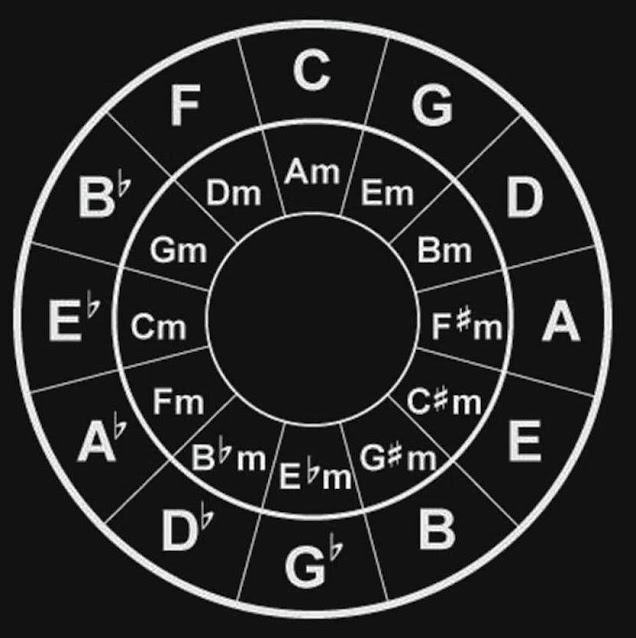Friendly Cows
The Circle of Fifths is central to composing, or even understanding, any music complicated enough to include a key change.
Not that anyone understands car gearshifts anymore, but they are a useful metaphor. Just as you can't slam from first gear to fourth gear without it being pretty jarring, you can't jump from one key to another in music randomly without it being jarring. In a car, you have to transition via neutral or other gears in between. That's kind of how music works and the circle of fifths is like a gearshift that let's you do so.
 |
| With three times the number of gears, and different ones for leaded and unleaded. Metaphors aren't perfect. |
Most songs, even ones that have nothing but melody, have chords (a group of notes played simultaneously). Those chords are based on the notes of the melody of the song (the melody is the "tune"; the part of a song you would whistle). Sometimes the chords are performed, sometimes not; but even when they are not actually played, they are implied, which is why most singers or musicians can "chime in" on something they hear being performed. They are just picking notes in the chords that the melody implies.
The most basic and familiar of the chords implied by a note is a Major Triad. It's just the first, third, and fifth notes of the major scale that starts on the note. For the note C, it would be C-E-G, for example, because C, E, and G are the first, third, and fifth notes in the major scale that starts on C (a.k.a. "the key of C Major").
As it happens, if you build a Major Triad on the fifth note of any scale, that Major Triad ALSO is the same three notes as a Major Triad built on the first note of the scale built on that note. For example, if you build a a Major Triad on the fifth note of the Key of C Major, you get G-B-D. G-B-D is also the Major Triad built on the first note of the Key of G Major.
So, if you are playing a tune in C, when it reaches a chord build on the fifth note in that scale (G), then it's easy to SWITCH to the key of G, because, well, you are already playing the chord that starts the key of G. It's the "neutral" on the gearshift; a shared chord between two keys that lets you switch from the initial key to the subsequent one smoothly.
You can do the same in the Key of G Major to get to D Major. Neatly, the process can be repeated until you wind up BACK in your original key (in this case, C Major). How useful is that!? The process of being able to go 'round all the keys using fifth chords as the transition mechanism is called
The Circle of Fifths.
If you are going counterclockwise it's technically called the Circle of FOURTHS, because in any key the fifth note going up the scale is the fourth note going down. But it's just a different name for the same musical mechanism.
 |
| It's also *ahem* "key" to how the sharps and flats occur in key signatures. Added bonus. |
So the tough part is remembering the sequence of keys in the Circle of Fifths. I use this mnemonic, which I'm happy to share with you.
The first phrase is natural keys (ones not based on a flat/sharp note); F C G D A E B.
The second phrase is all the keys based on flatted-notes: G-flat, D-flat, A-flat, E-flat, and B-flat.
This can help you memorize the Circle of Fifths. You can't exactly use it for the Circle of Fourths or number sharps and flats in a key signature BUT once you have the Circle of Fifths you can derive the other two sequences.




I am a nerd and just learned my scales reeeeaaal good.
ReplyDeleteAlso, everyone's got their opinions, but I'm smitten with the chord progression D-C-G-D. Two songs that feature it: "Can't You See" by the Allman Brothers, and "Seven Bridges Road" by the Eagles. It just lends itself to nice harmonies without being complicated. Start on the root, backpedal a whole step, then a fifth and another fifth to get home.
You mention that nobody understands gear shifts any more (as Guy Gardner advised 30 years ago, "never drive automatic, never shoot automatic"); but we're reaching a point that the metaphors "clockwise" and "counter-clockwise" are going to be lost on the young'uns. They might have to do as the physicists do and speak of the right-hand rule and the left-hand rule, which honestly would please me.
- HJF1
... Marshall Tucker Band. I am ashamed.
Delete- HJF1